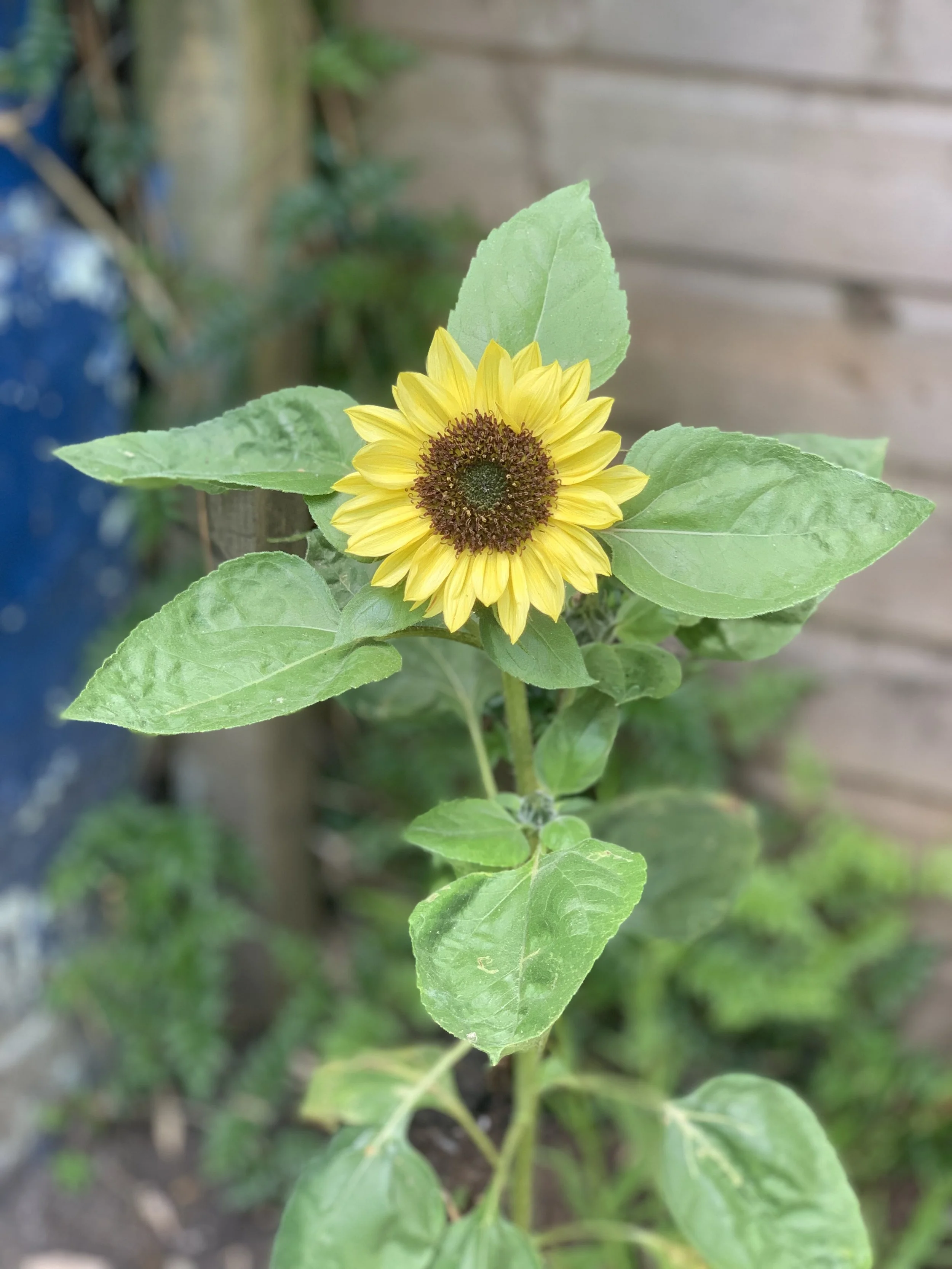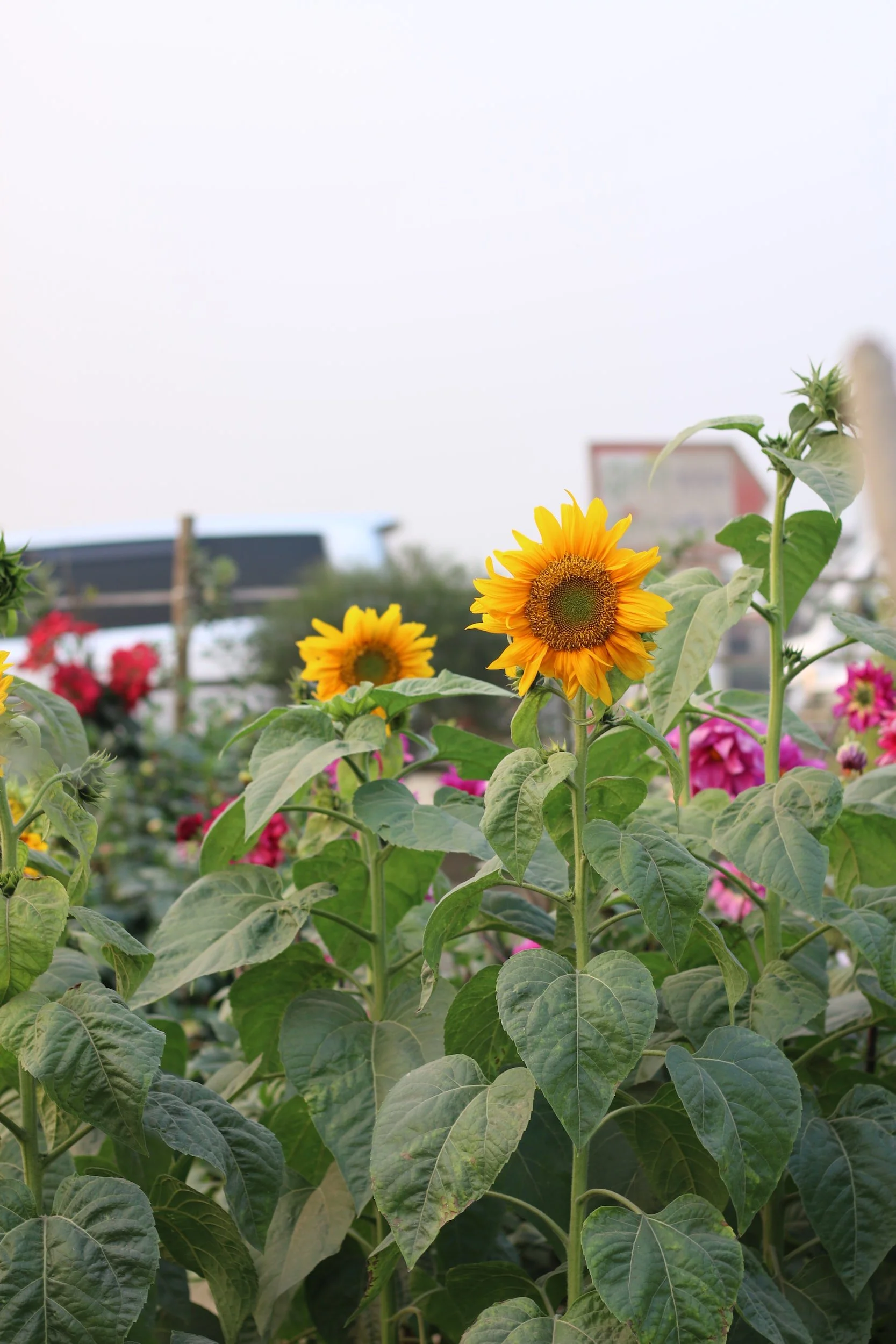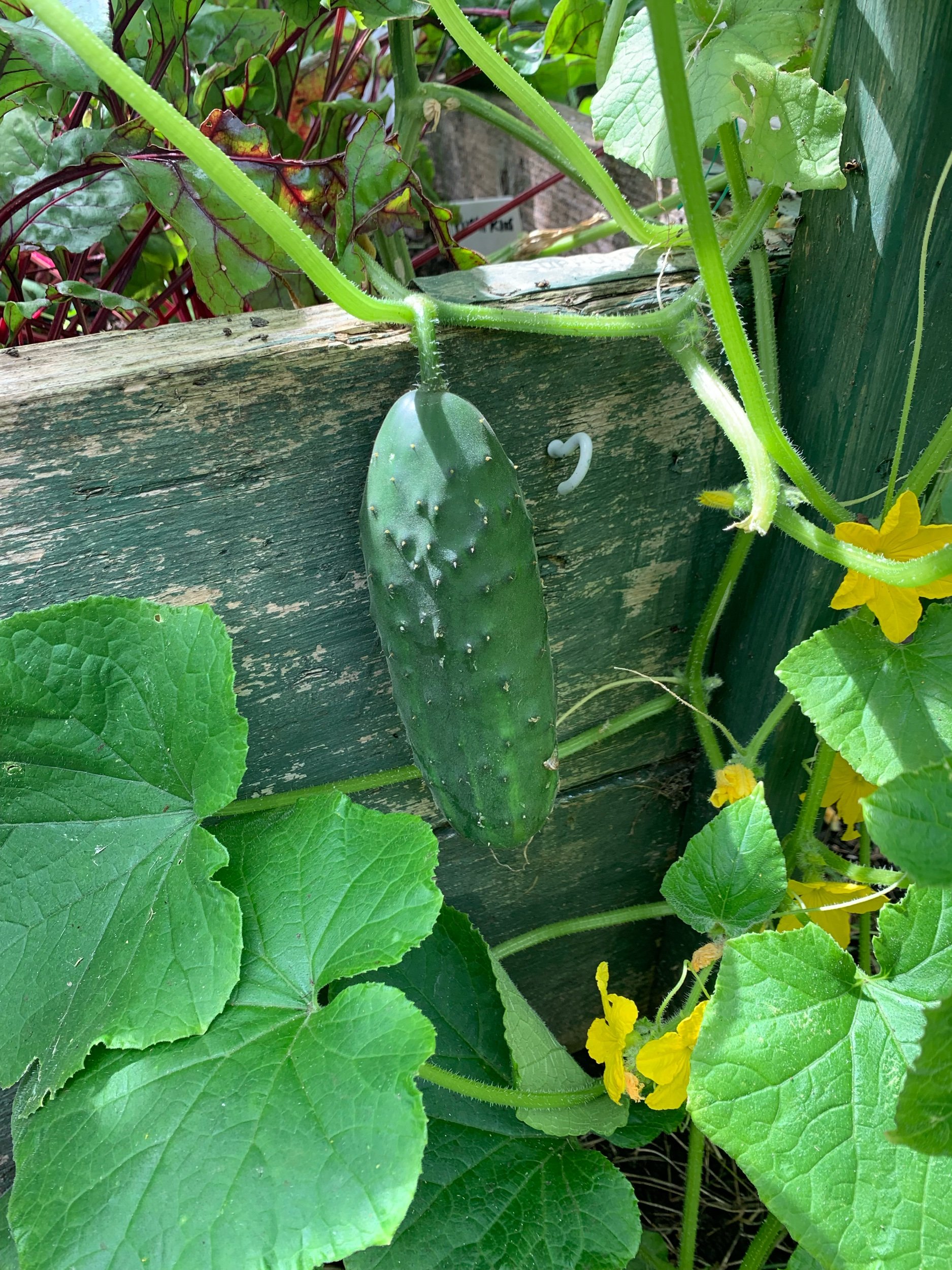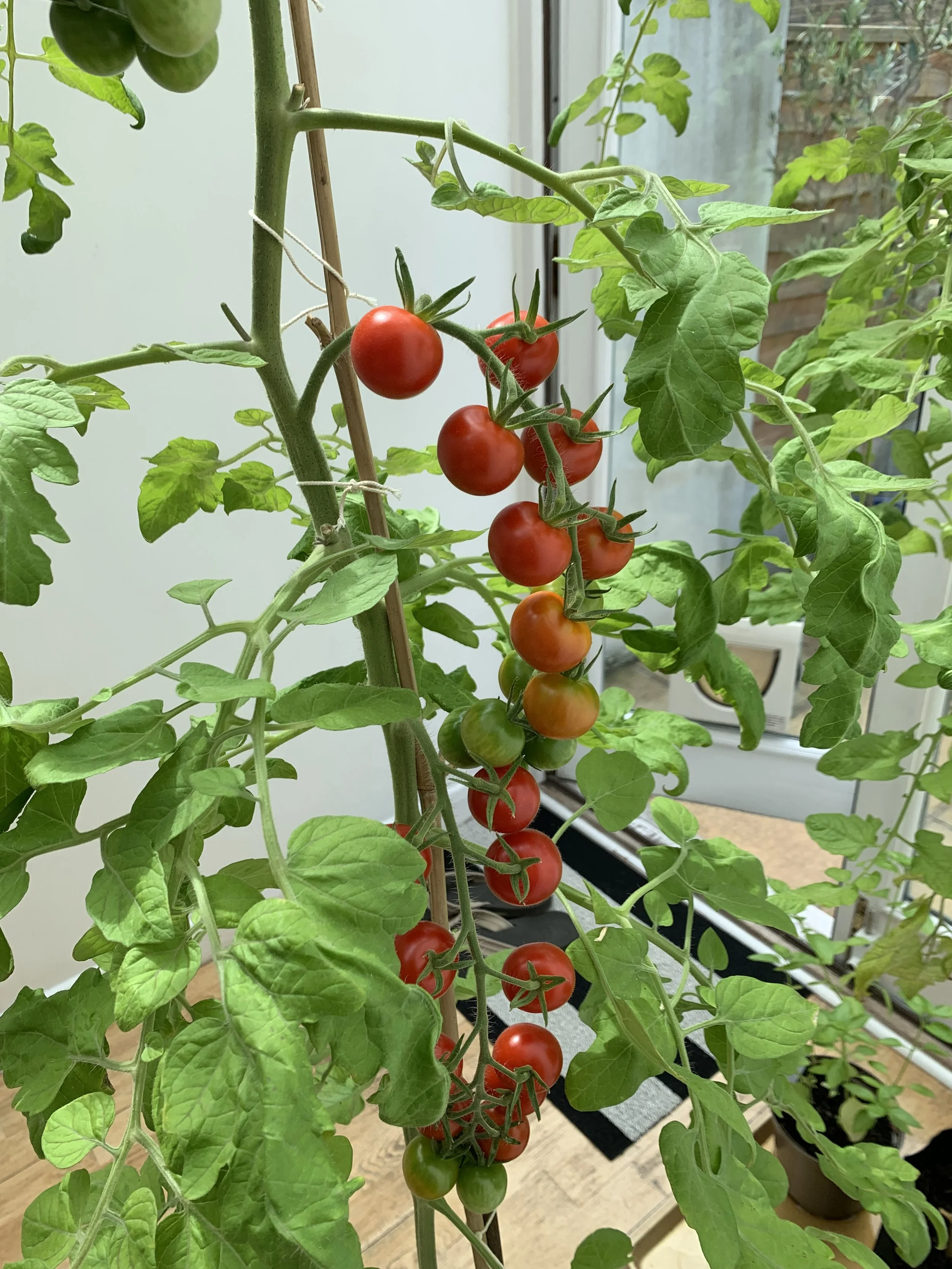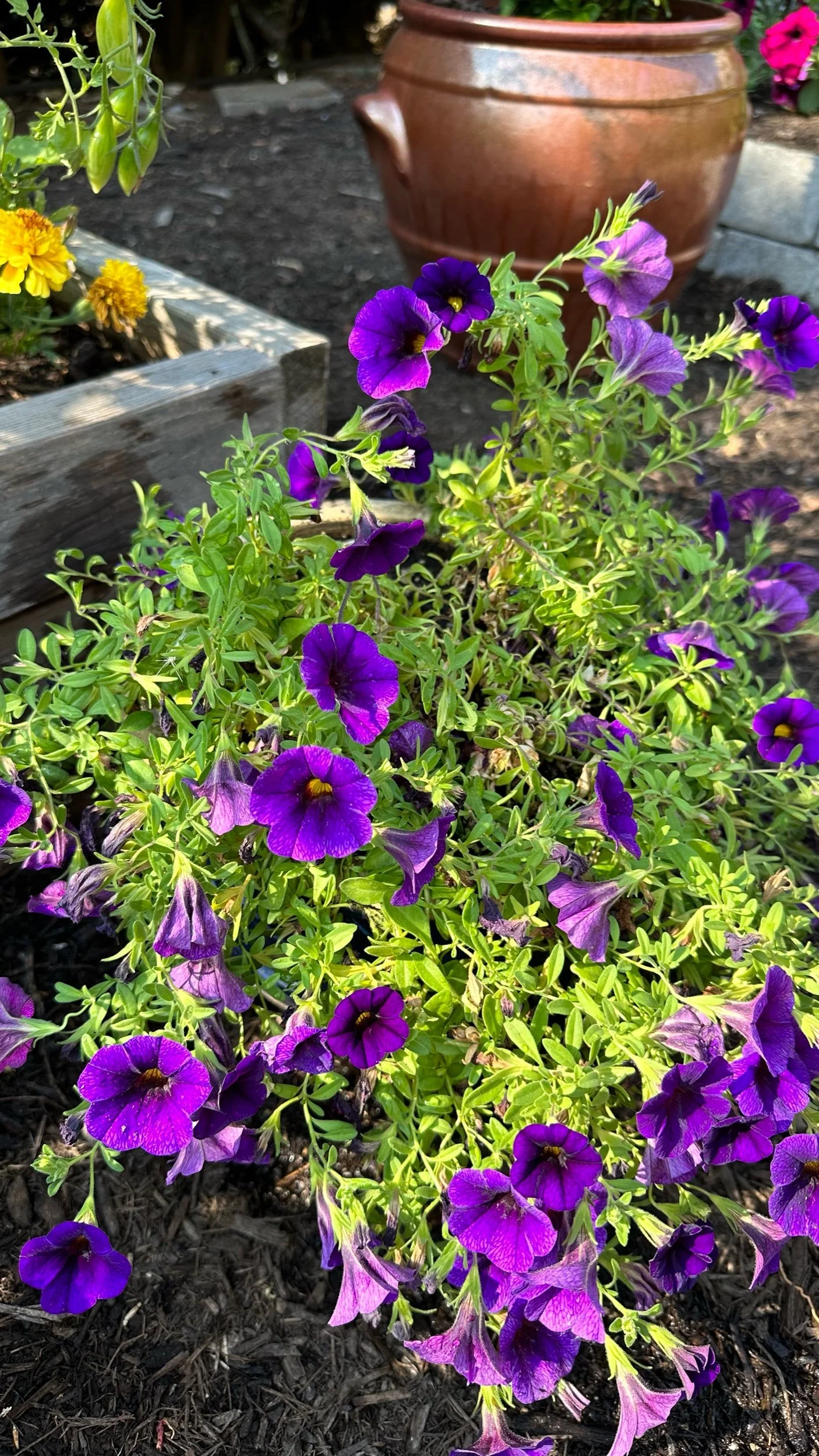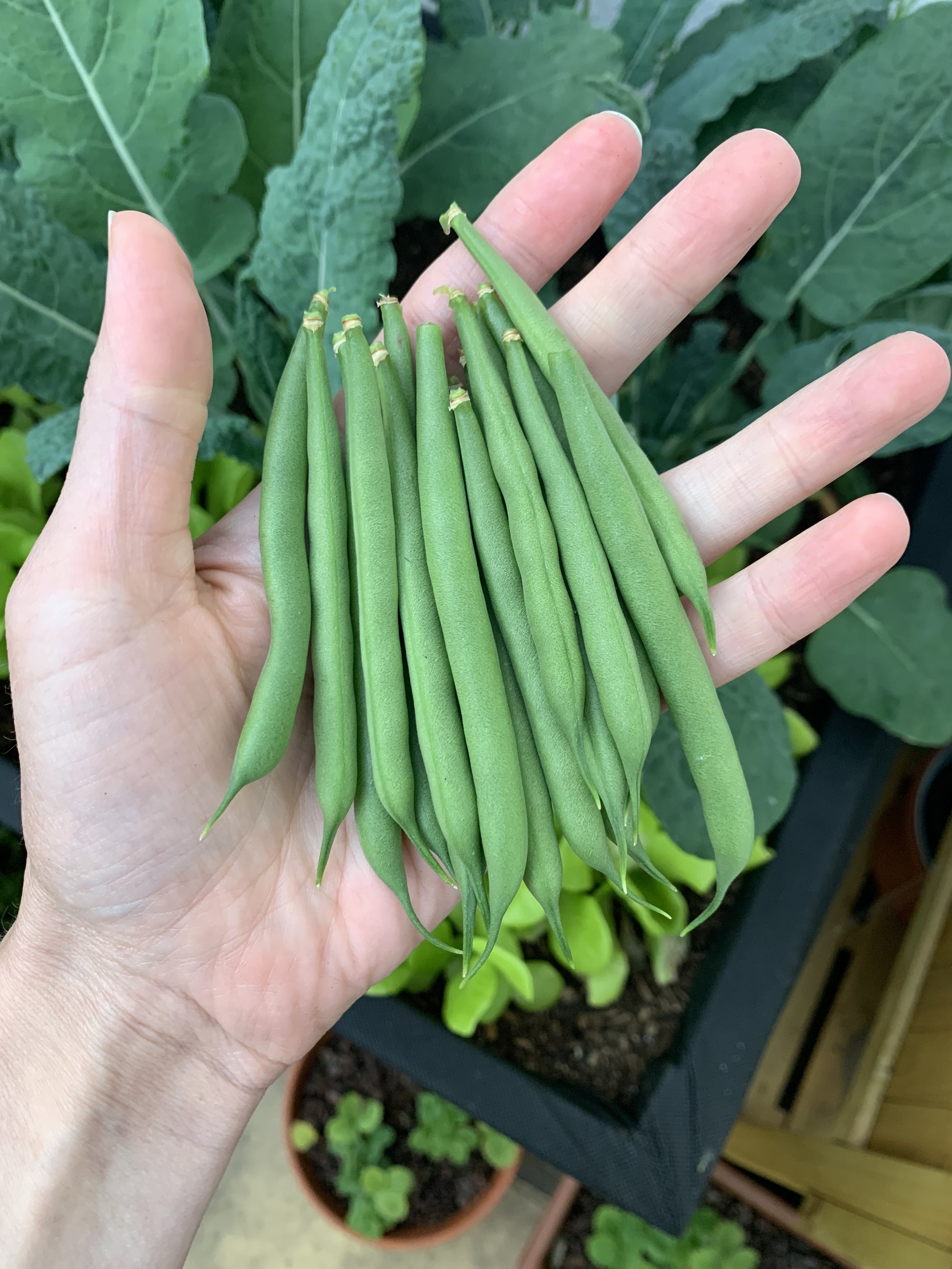The Best Time to Plant Sunflowers
This article has links to products that I may make commission from.
Sunflowers (Helianthus annuus) are a popular and beautiful plant that are known for their bright, cheerful yellow flowers.
Sunflowers are also attractive to bees, butterflies, and birds, making them an important part of a sustainable garden ecosystem.
When it comes to planting sunflower seeds, timing is crucial in ensuring their success and beauty.
The best time to plant sunflowers depends on several important factors, including the threat of frost, the length of the growing season, and the preparation of the soil.
Here, I will walk you through the best time to plant sunflower seeds and the factors to consider for optimal growth.
To learn more about growing sunflowers, check out my guide When to Harvest Sunflower Seeds.
The first sunflower I grew in the backyard.
When to Plant Sunflowers
The ideal time to plant sunflowers is when the soil has warmed up to at least 50°F, which typically occurs in April or May.
This may vary depending on the region, as some areas may have warmer soils earlier in the spring, while others may experience a delayed start to the growing season due to cooler temperatures.
One of the main factors to consider when planting sunflowers is the threat of frost.
Sunflowers are warm-season plants that are sensitive to cold temperatures, and even a light frost can cause significant damage to the developing plants.
As a result, it is important to wait until after the last spring frost date in your area before planting sunflowers.
Another factor to consider when planting sunflowers is the length of the growing season.
In areas with short growing seasons, sunflowers should be planted earlier in the spring to ensure they have enough time to mature before the arrival of cold weather.
In areas with longer growing seasons, sunflowers can be planted later in the spring or even early summer.
It is also important to consider the size and type of sunflowers you plan to plant as there are several different sunflower varieties.
Tall, single-stemmed sunflowers are best planted in late spring or early summer, as they need a long growing season to reach their full height.
Dwarf sunflowers, on the other hand, can be planted earlier in the spring or later in the summer, as they do not grow as tall and have a shorter growing season.
Fun fact about sunflowers:
Sunflowers have the ability to follow the sun across the sky.
This is known as heliotropism and it is a process where the flowers will turn towards the sun to maximize their exposure to sunlight.
This ensures that the flowers receive the maximum amount of light and energy they need to grow and bloom.
It's amazing to think that these flowers have the ability to move and adjust themselves in response to their environment, making them not only beautiful, but also incredibly adaptable and resilient.
And they produce edible seeds!
How Late Can You Plant Sunflowers?
The latest you can plant sunflowers depends on the climate and growing conditions in your area, as well as the maturity rate of the sunflower variety you are planting.
Sunflowers typically have a growing season of about 100-120 days, so it is important to plant them early enough in the season to allow them to reach maturity before the first fall frost.
In most parts of the United States and United Kingdom, planting sunflowers in late June or early July is typically the latest that you can plant and still expect a successful harvest.
However, in areas with longer growing seasons, sunflowers can be planted as late as mid-July to early August and still have time to reach maturity before the first frost.
It is important to remember that the later you plant sunflowers, the shorter their growing season will be, which can result in smaller blooms and reduced seed production.
Therefore, it is always best to plant sunflowers as early as possible to ensure a long and healthy growing season.
Do Sunflowers Come Back Every Year?
No, sunflowers are typically grown as annual plants, which means they complete their entire life cycle within one growing season and do not come back the following year.
After they have produced seeds and the flowers have died, the plant will also die and will need to be replanted in the spring to produce another crop of sunflowers.
However, there are some types of sunflowers that can self-sow, meaning that they can drop their seeds onto the ground and new sunflowers will grow from those seeds the following year.
This is a natural way for sunflowers to spread and proliferate in their growing environment.
If you want to encourage self-sowing of sunflowers, simply leave some of the mature sunflower heads on the plant at the end of the growing season.
When the seeds are ripe, they will fall from the head and can be harvested and replanted in the spring.
This is an easy and cost-effective way to enjoy gardening by growing sunflowers year after year in your garden.
When to Start Sunflower Seeds Indoors
Sunflower seeds should be started indoors 4-6 weeks before the last average frost date in your area, which typically occurs in March.
This will allow the seedlings to grow and mature to a suitable size before being transplanted into the garden.
To start sunflower seeds indoors, fill seed trays or pots with quality seed-starting soil, moisten the soil, and plant seeds (2-3) per container, about 1/4 inch deep.
Place the containers in a warm, sunny location and keep the soil consistently moist.
The seeds should germinate in 7-14 days, and once the seedlings have sprouted, they should be provided with bright, direct light.
When to Transplant Sunflower Seedlings
Once the seedlings have grown to a height of 4-6 inches and have developed a strong root system, they can be transplanted into the garden.
Keep in mind that sunflowers are sensitive to cold temperatures, so it is best to wait until after the last frost date has passed and the soil has warmed before planting sunflowers outdoors.
When transplanting sunflowers, be sure to choose a location that receives full sun and has well-draining soil.
Sunflowers should be planted at the same depth as they were in the seedling tray or container, with the seedling being gently firmed into the soil to prevent air pockets from forming around the roots.
Space the seedlings about 18-24 inches apart to allow for proper air circulation and room for growth.
Water the seedlings well after transplanting, and continue to provide consistent moisture until the plants are established.
With the right timing and care, your indoor-started sunflowers will thrive and provide you with a beautiful and bountiful harvest.
For more watering tips, check out my guide How Often to Water Seedlings.
Here are the top 3 heirloom sunflower seeds I recommend growing:
How to Direct Sow Sunflower Seeds
Sowing sunflower seeds directly into the ground is a simple and straightforward method for planting sunflowers in your garden.
Here's how to do it:
Choose the right location:
Sunflowers need full sun to thrive, so choose a location that receives at least 6-8 hours of direct sun per day.
The soil should also be well-draining, as sunflowers are susceptible to root rot if the soil stays too wet.
Prepare the soil:
Remove any weeds and other debris from the planting area and till the soil to a depth of 6-8 inches.
Sunflowers prefer well-draining soil with a neutral to slightly alkaline pH.
Before planting, the soil should be loosened to a depth of at least 12 inches and amended with compost or other organic matter to improve fertility and soil structure.
Learn more about the best garden compost.
Sow the seeds:
Plant sunflower seeds 1-1.5 inches deep, spaced 6-12 inches apart.
You can also sow seeds in groups, creating a sunflower bed.
Water the planting area well after sowing the seeds.
Water and care for the seedlings:
Keep the soil consistently moist, but not waterlogged, until the seedlings have emerged.
Once the seedlings have sprouted, water them deeply once a week.
If necessary, thin the seedlings to the final spacing when they are a few inches tall.
Fertilize:
Sunflowers are heavy feeders, and you may want to fertilize them once every three weeks to six weeks with a balanced, water-soluble fertilizer to promote healthy growth and flower development.
Here is the fertilizer I recommed for sunflowers:
4 Reasons Sunflowers are Great for Sustainable Gardens
Soil improvement
Sunflowers have deep roots that help to loosen compacted soil and improve soil structure.
They also add organic matter to the soil as they grow, which helps to improve soil fertility and promote healthy plant growth.
Attracting pollinators
Sunflowers are a great source of nectar and pollen for bees, butterflies, and other beneficial insects.
By attracting pollinators to the garden, sunflowers help to support the overall health of the garden ecosystem and ensure that other plants receive the necessary pollination for fruiting and seed production.
Providing food and habitat for wildlife
Sunflowers are also an important food source for birds, particularly during the fall when other food sources are scarce.
The large, sturdy stems of sunflowers provide excellent perches for birds, and the seeds can be left on the plant to provide food throughout the winter.
Low maintenance
Sunflowers are relatively low-maintenance and easy to grow, making them a great choice for a sustainable garden.
They do not require any special care or attention and can be grown with minimal inputs, making them an environmentally friendly option.
By providing soil improvement, attracting pollinators, and providing food and habitat for wildlife, sunflowers are a valuable and versatile plant that can help to promote a healthy and sustainable garden ecosystem.
Looking for more garden inspiration? Check out my other flower garden guides:
